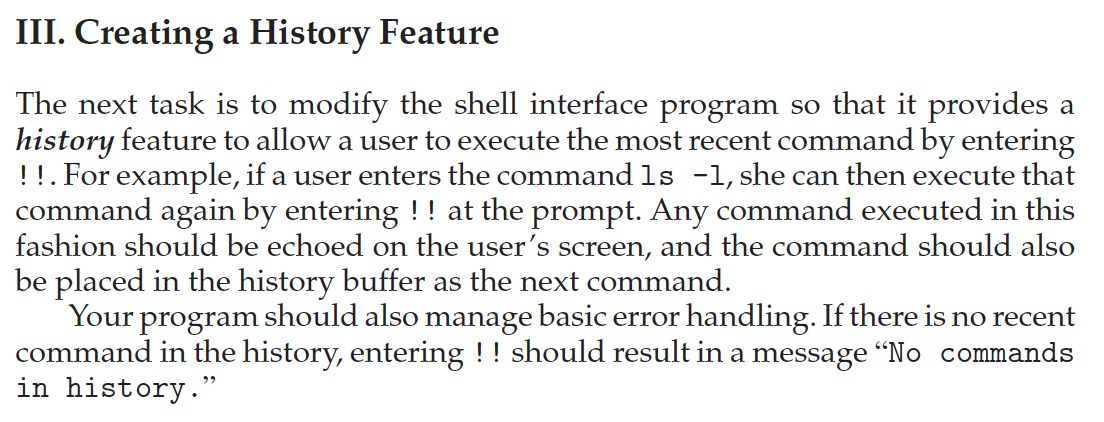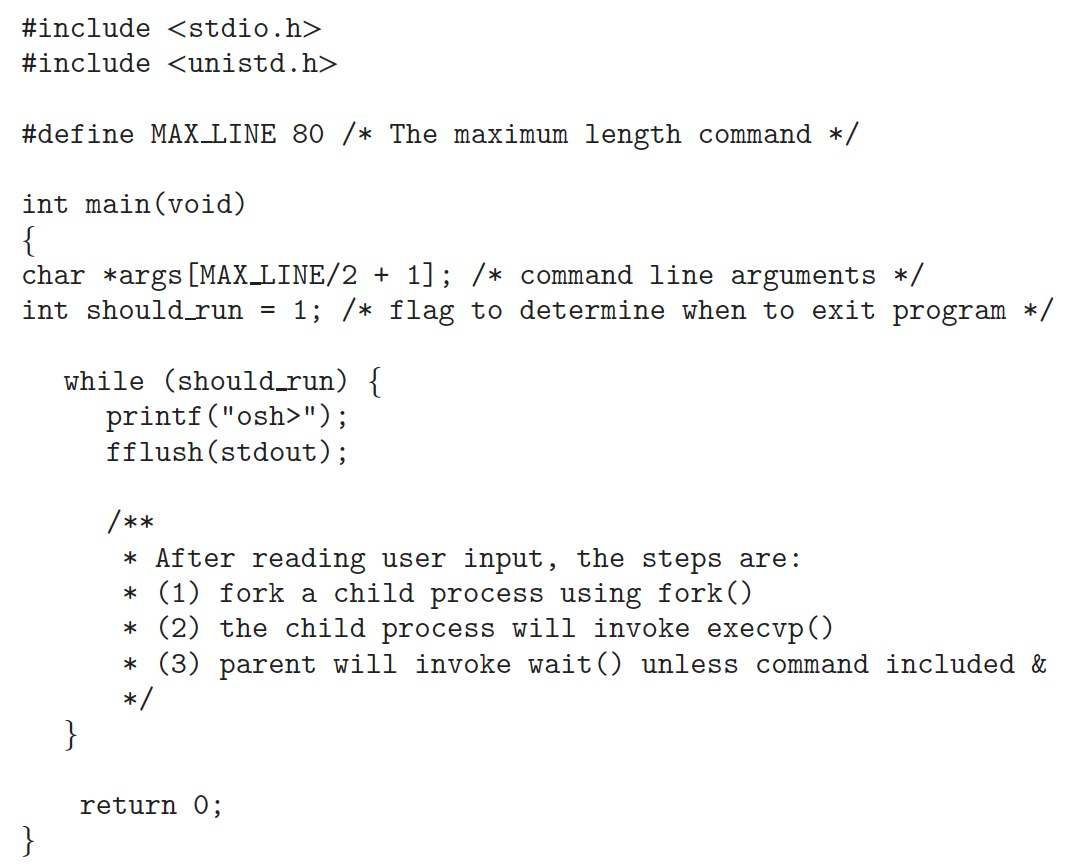Answered step by step
Verified Expert Solution
Question
1 Approved Answer
DO this in UNIX, C Programming III. Creating a History Feature The next task is to modify the shell interface program so that it provides


DO this in UNIX, C Programming
III. Creating a History Feature The next task is to modify the shell interface program so that it provides a history feature to allow a user to execute the most recent command by entering !!. For example, if a user enters the command ls -1, she can then execute that command again by entering !! at the prompt. Any command executed in this fashion should be echoed on the user's screen, and the command should also be placed in the history buffer as the next command. Your program should also manage basic error handling. If there is no recent command in the history, entering !! should result in a message No commands in history. #includeStep by Step Solution
There are 3 Steps involved in it
Step: 1

Get Instant Access to Expert-Tailored Solutions
See step-by-step solutions with expert insights and AI powered tools for academic success
Step: 2

Step: 3

Ace Your Homework with AI
Get the answers you need in no time with our AI-driven, step-by-step assistance
Get Started


